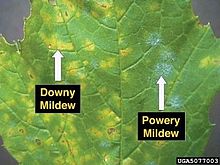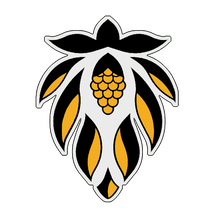 This grower blog deals only with the post-harvest practices in traditional commercial hopyards and some best practice strategies to control and reduce the percentage of overwintering DM and other pathogens. Great Lakes Hops uses these combined practices and has found them to be very effective in the Midwest region hop production. Control of downy mildew (DM) in the hopyard is an ongoing challenge for growers in many regions; and especially difficult for growers that have susceptible hop varieties. DM takes different forms and produces several different spore types in reaction to environmental conditions - i.e. aerial, oospores, and zoospores. Each spore type has its own set of specific control measures. DM is active whenever temperature and moisture conditions are correct; spring, summer, and fall. In the fall season, downy mildew switches from actively producing airborne spores that mainly affect the bines, foliage, and cones; to forming protective oospores and motile zoospores that can overwinter in the soil and dormant hop crown. The more familiar springtime DM spikes on new shoots are less evident in the fall as hop growth slows and the infected older foliage takes on a mottled appearance; which many growers fail to notice. Once DM has a foothold in a hopyard, outside airborne spores are not necessary to re-start early springtime infections. Great Lakes Hops has found the following fall practices to be effective in gaining good control over downy mildew and other pests and pathogens in hopyards. |
Details
Blog AuthorLynn, the head hop grower at Great Lakes Hops has over 30 years of experience in the horticultural field. Browse the blog articles here to find useful growing information for humulus lupulus, based on personal experience and observations at Great Lakes Hops. Archives
January 2020
Categories
All
|


 RSS Feed
RSS Feed